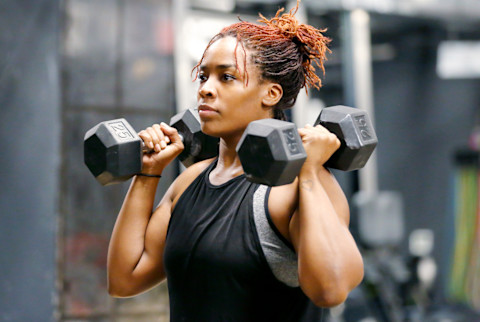How A Longevity-Focused MD Exercises For A Longer, Healthier Life

I think of strength training as a form of retirement saving. Just as we want to retire with enough money saved up to sustain us for the rest of our lives, we want to reach older age with enough of a "reserve" of muscle (and bone density) to protect us from injury and allow us to continue to pursue the activities that we enjoy.
It is much better to save and invest and plan ahead, letting your wealth build gradually over decades, than to scramble to try to scrape together an individual retirement account in your late 50s and hope and pray that the stock market gods help you out. Like investing, strength training is also cumulative, its benefits compounding. The more of a reserve you build up, early on, the better off you will be over the long term.
Yet, unlike some guys in the gym, I'm less concerned with how big my biceps are or how much I can bench press. Those might matter if you're a bodybuilder or a powerlifter, but I'd argue they matter less in the Centenarian Decathlon (or in real life).
A far more important measure of strength, I've concluded, is how much heavy stuff you can carry. I say this on the basis of my intuition but also research into hunter-gatherers and human evolution. Carrying is our superpower as a species. It's one reason we have thumbs, as well as long legs (and arms).
No other animal is capable of carrying large objects from one place to another with any efficiency. (And the ones that can, like horses and other livestock, do so only because we bred and trained and harnessed them.)
This frames how I view strength training in general. It's largely about improving your ability to carry things
I've always been a fan of carrying heavy objects with my hands. As a teenager working on a construction site over the summers, I always volunteered to haul tools and materials across the site, and today I still incorporate some kind of carrying, typically with dumbbells, kettlebells, or sandbags, into most of my workouts.
I've also become semi-obsessed with an activity called rucking, which basically means hiking or walking at a fast pace with a loaded pack on your back. Three or four days a week, I'll spend an hour rucking around my neighborhood, up and down hills, typically climbing and descending several hundred feet over the course of 3 or 4 miles. The 50- to 60-pound pack on my back makes it quite challenging, so I'm strengthening my legs and my trunk while also getting in a solid cardiovascular session. The best part is that I never take my phone on these outings; it's just me, in nature, or maybe with a friend or a family member or a houseguest (for whom rucking is mandatory; I keep two extra rucksacks in the garage).
I was introduced to this pastime by Michael Easter in his eye-opening book The Comfort Crisis. His intriguing thesis is that because we have removed all discomfort of any kind from modern life, we have lost touch with the fundamental skills (not to mention the frequent suffering) that once defined what it meant to be human. Carrying stuff over long distances is one of these skills; our ancestors likely had to range far and wide to hunt food for their families and then carry their kills back to camp to feed everyone. But it's so effective that the military has incorporated it into their training.
"Carrying shaped our species," he says. "Our ancestors carried often. It gave them robust functional strength and endurance that was likely very protective. But we've engineered carrying out of our lives, just as we have many other forms of discomfort. Rucking is a practical way to add carrying back into our lives."
The main difference is that instead of carrying 60 pounds of antelope meat in my pack, I'm typically hauling heavy metal weights, which are admittedly less appetizing. One thing I specifically focus on when rucking is the hills. Going uphill gives me a chance to push my VO2 max energy system; first-time ruckers are amazed at how taxing it is to walk up a 15% grade with even 20 pounds on your back—and then walk back down. (A good goal is to be able to carry one-quarter to one-third of your body weight once you develop enough strength and stamina. My daughter and wife routinely carry this much when they join me.)
As great as rucking is, it's not the only thing I rely on to build my strength. Fundamentally, I structure my training around exercises that improve the following:
- Grip strength, how hard you can grip with your hands, which involves everything from your hands to your lats (the large muscles on your back). Almost all actions begin with the grip.
- Attention to both concentric and eccentric loading for all movements, meaning when our muscles are shortening (concentric) and when they are lengthening (eccentric). In other words, we need to be able to lift the weight up and put it back down, slowly and with control. Rucking down hills is a great way to work on eccentric strength because it forces you to put on the "brakes."
- Pulling motions, at all angles from overhead to in front of you, which also requires grip strength (e.g., pull-ups and rows).
- Hip-hinging movements, such as the deadlift and squat, but also step-ups, hip-thrusters, and countless single-leg variants of exercises that strengthen the legs, glutes, and lower back.
Excerpt from OUTLIVE: The Science and Art of Longevity. Copyright © 2023 by Peter Attia. Published by Harmony, an imprint of Penguin Random House, LLC. Reprinted with permission.
